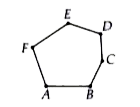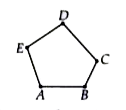How many pairs of adjacent angles are formed when two lines intersect in a point?
Step by step video & image solution for How many pairs of adjacent angles are formed when two lines intersect in a point? by Maths experts to help you in doubts & scoring excellent marks in Class 7 exams.
Updated on:21/07/2023Topper's Solved these Questions
Similar Questions
How many pairs of corresponding angles are formed when two paral intersected by a transversal? many pairs of corresponding angles are formed when two parallel lines are 21 and 42 are complementary angles. 42 and 3 are supplementary angles. If L1- 50°, Find the measure of 23.
View SolutionHow many pairs of adjacent angles, in all, can you name in Figure.

View Solution
Knowledge Check
How many pairs of adjacent angles are there in the following figure?
 A5B4C6D3
A5B4C6D3How many pairs of adjacent vertices are there in the following figure?
 A5B3C2D4
A5B3C2D4
How many pairs of adjacent angles, in all, can you name in Fig.26?
View SolutionIn the adjoining figure, ABCD is a quadrilateral.

(i) How many pairs of adjacent sides are there? Name them.
(ii) How many pairs of opposite sides are there? Name them.
(iii) How many pairs of adjacent angles are there? Name them.
(iv) How many pairs of opposite angles are there? Name them.
(v) How many diagonals are there? Name them.
View SolutionIn Figure, ABCD is a quadrilateral.
Name a pair of adjacent sides.
Name a pair of opposite sides.
How many pairs of adjacent sides are there?
How many pairs of opposite sides are there?
Name a pair of adjacent angles.
Name a pair of opposite angles.
How many pairs of adjacent angles are there?
How many pairs of opposite angles are there?

View SolutionTell how many different angles would be formed by a transversal intersecting three parallel lines. How many different angle measures would there be?
View SolutionIf the bisectors of two adjacent angles A and B of a quadrilateral ABCD intersect at a point O such that ∠C+∠D=k∠AOB , then find the value of k - 1 is
View SolutionIf the bisectors of two adjacent angles A and B of a quadrilateral ABCD intersect at a point O such that ∠C+∠D=k∠AOB, then the value of k-1 is
View Solution
